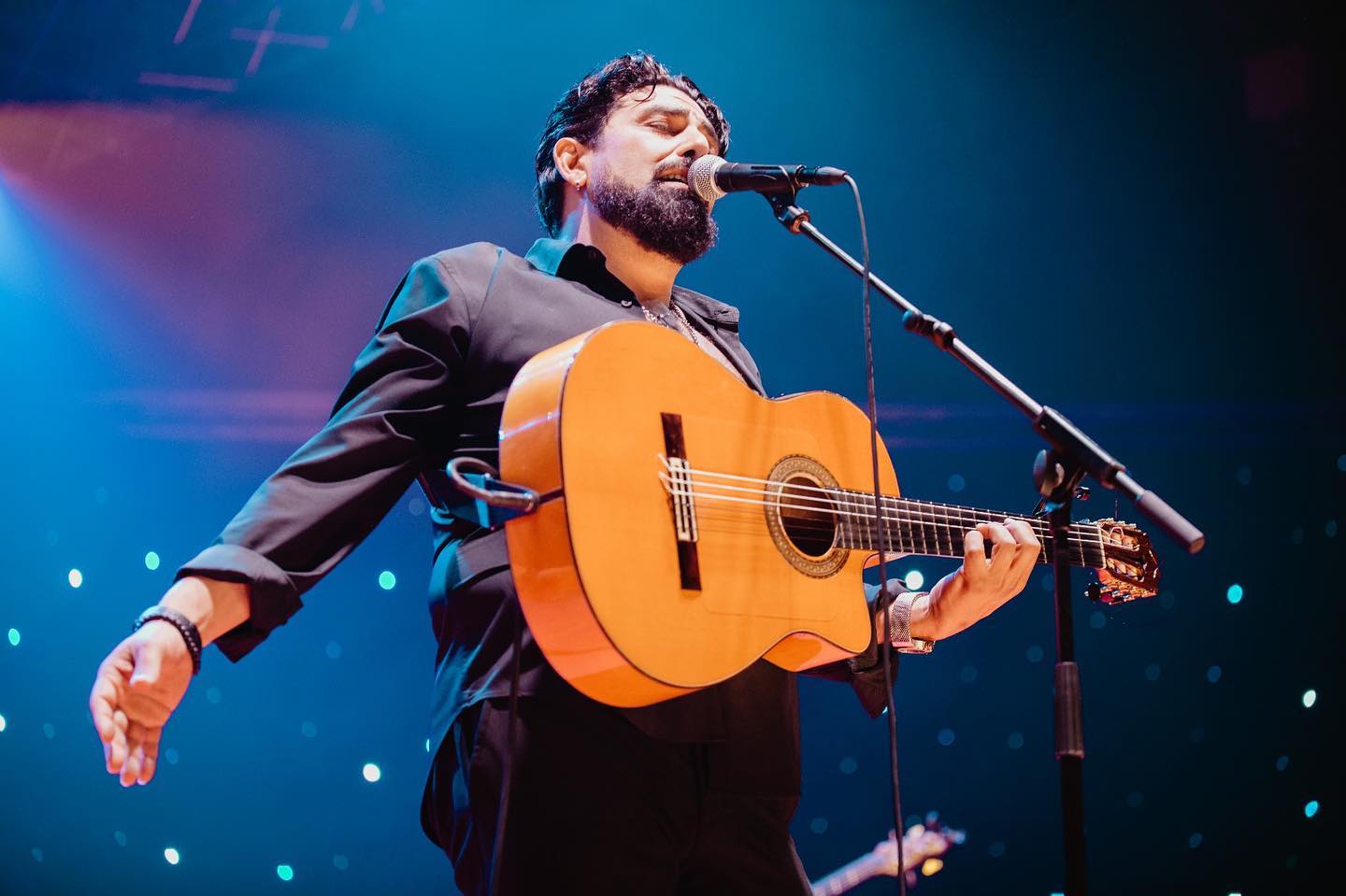José Ortega Manzanita
Category
JAbout This Project
Manzanita’s son, in his father’s footsteps: José, nicknamed Yelow in his childhood, inherited Manzanita’s art and now presents his third album.
(Article by Manuel Román 04/9/2016)
José, nicknamed Yelow in his childhood, inherited Manzanita’s art and now presents his third album.
Most of our readers probably remember Manzanita, the flamenco singer who did some original, excellent versions of two hits from the 70s, “Un ramito de violetas”, a wonderful creation by Cecilia, and “La quiero a morir”, a ballad by the Gallic Francis Cabrel. The life of José Manuel Ortega Heredia, nephew of Manolo Caracol, ended in 2004, when he was only forty-eight years old, as a result of a myocardial infarction. He was notoriously overweight, which probably contributed to his early death: he weighed no less than one hundred and twenty-six kilos.
The curious thing about the artistic biography of Manzanita, who was nicknamed Manzanita as a child because he was very shy and often blushed, is that he started out as a guitarist and went on to accompany singing legends such as the Granada-born Enrique Morente. One day he left that instrument and began to sing with a group of calés like himself, who lived in a working class neighbourhood in Madrid, Caño Roto, which they took as their name, according to the CBS record company, to identify the peculiar sound of their voices and guitars. They sang rumbas with a different air, more pop, and became known as Los Chorbos. In 1978 Manzanita decided to become independent and it was then that he popularised “Verde”, based on the poem by García Lorca and the songs mentioned at the beginning. He was a renovator of the new flamenco. He retired for a long period of time, dedicating himself only to the worship of the Evangelical Church (as Peret had also done), and made a living in a village in Malaga selling fabrics in street markets.
One of his sons, José, who as a child was called Yelow, inherited his art as a cantaor and came to accompany him in some performances, to perform duets and other times to serve him with his voice in the chorus. Now the third of his albums has just been released, the first in which he performs his own compositions, produced by Manuel Ruiz (Queco), who is a constant discoverer of new talents. In the two previous recordings, this new Manzanita was dedicated to paying homage to his father, using his father’s repertoire. But he had to take a step forward to show his own personality, and that is what he has done with “Sombras y sueños”, where with a higher-pitched voice than his father’s (which was more broken, more serious) he takes us to listen to ballads and rumbas with his own personal air. He is a good cantaor, although for the moment we can only judge him as a flamenco balladeer, certainly with more substance than many of those who today believe themselves to be copleros and flamencos, without being either one, cancioneros, or the other, which is infinitely more difficult. So our encouragement and congratulations go to this second Manzanita, who continues the dynasty and the paternal footsteps. He usually has luxuriant hair, a moustache and a trimmed beard. He is not underweight either, without reaching the excesses of the author of his day. If his father was from Madrid, this José Ortega was born in Málaga. He doesn’t like to watch videos of his father, even though he hasn’t forgotten him and continues to pay tribute to him in public when he covers his songs, because he gets nervous and tears come to his eyes immediately. Deep down, they are both sentimental.
The current Manzanita doesn’t forget that in his family there were artists of stature, in flamenco singing and bullfighting, like the legendary Joselito. He started performing in public very early: at the age of twelve. He was always certain that he would earn his living with his voice. Although his breakthrough as a soloist came somewhat late, as he gave his first compositions to other performers. Of the songs on his third album, “Sombras y sueños”, he himself points out that the one entitled “La luna baila” is the one with the most possibilities and quality to become more widely known. There are seven siblings in his family, and all of them are dedicated to flamenco music. His biography states that before deciding to make it on his own, as a soloist, he spent some time, at a very young age, singing in the groups that accompanied Rocío Jurado and Isabel Pantoja. He alternated a few times with Camarón de la Isla, whom he identifies as a phenomenon, who almost hypnotised him when he listened to him sing. Manzanita’s tastes, somewhat eclectic and in tune with his youth, range from Michael Jackson to Michael Bolton, but none of these idols could take away the admiration he always felt for his father, as a cantaor, and for Paco de Lucía as the great master of the guitar. In the future, Manzanita aspires to record an album that is closer to pure flamenco. She wants to leave in good stead the nickname she carries and the heritage of the historic dynasty to which she belongs.



